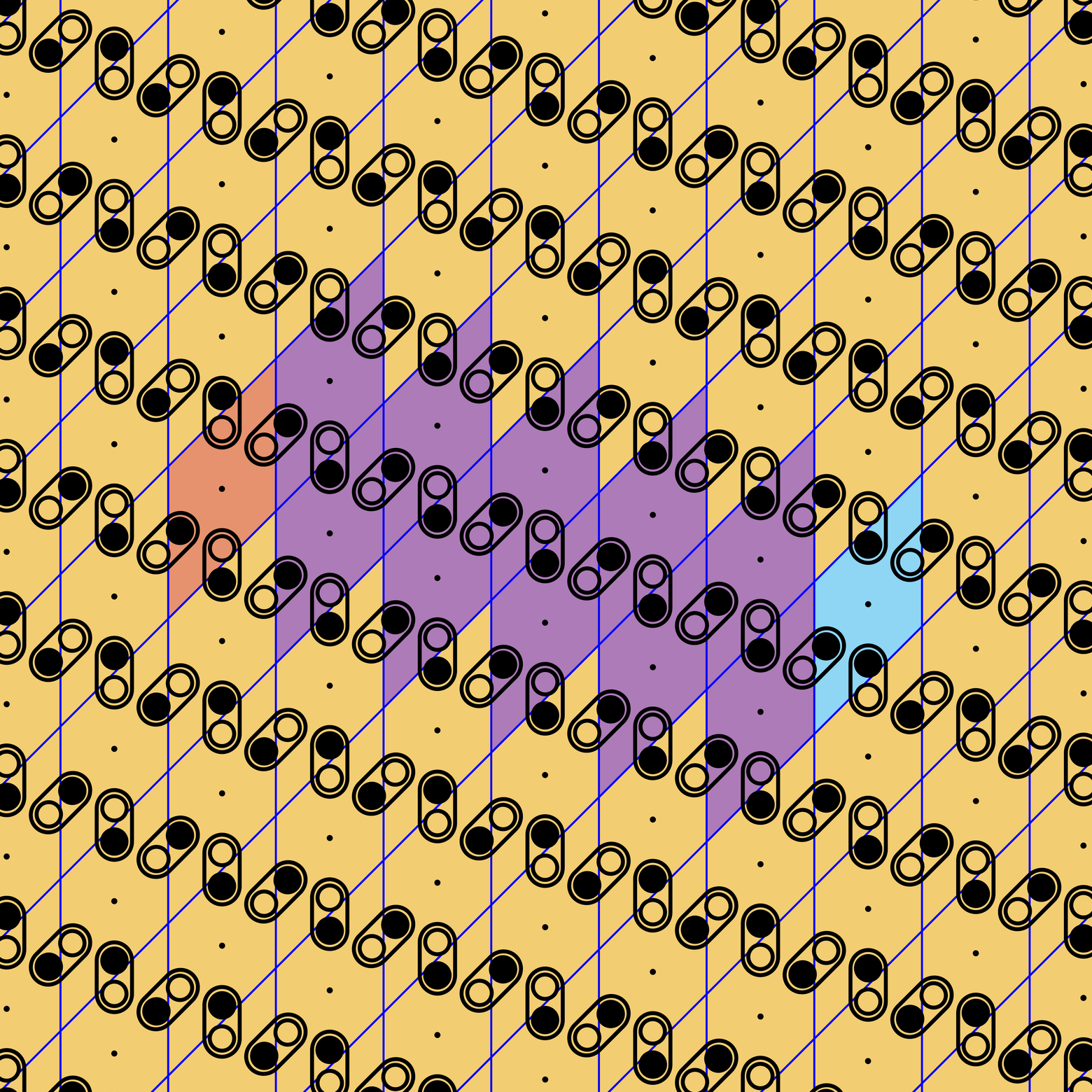 [source]
Physical phenomena oftentimes exhibit distinct qualitative behavior in different dimensions. So, can one make a two-dimensional system behave as in three dimensions? We introduce a simple shear transformation in a two-dimensional artificial ice, and by that we recover some of the properties of natural three-dimensional ice. Three-dimensional water ice has multiple spatial configurations of its molecules that all possess the same energy, hence the system is degenerate and it always exhibits some disorder. Its two-dimensional counterpart, the square ice, lacks such a degeneracy. By combining experiments, theory, and numerical simulations, we constructed an artificial two-dimensional ice composed of micrometer-sized colloidal particles.
Upon shearing its geometry, this colloidal ice exhibits regions of two distinct local arrangements of colloids with very similar energies, rendering the system effectively degenerate. This, however, comes with a cost: these two arrangements of nearly the same energy cannot exist together unless they are connected to each other by topological defects, which cost higher energy and require long-ranged structural changes in order to be eliminated.
[source]
Physical phenomena oftentimes exhibit distinct qualitative behavior in different dimensions. So, can one make a two-dimensional system behave as in three dimensions? We introduce a simple shear transformation in a two-dimensional artificial ice, and by that we recover some of the properties of natural three-dimensional ice. Three-dimensional water ice has multiple spatial configurations of its molecules that all possess the same energy, hence the system is degenerate and it always exhibits some disorder. Its two-dimensional counterpart, the square ice, lacks such a degeneracy. By combining experiments, theory, and numerical simulations, we constructed an artificial two-dimensional ice composed of micrometer-sized colloidal particles.
Upon shearing its geometry, this colloidal ice exhibits regions of two distinct local arrangements of colloids with very similar energies, rendering the system effectively degenerate. This, however, comes with a cost: these two arrangements of nearly the same energy cannot exist together unless they are connected to each other by topological defects, which cost higher energy and require long-ranged structural changes in order to be eliminated.
Topology restricts quasidegeneracy in sheared square colloidal ice
E. C. Oğuz, A. Ortiz-Ambriz, H. Shem-Tov, E. Babià-Soler, P. Tierno, and Y. Shokef
Physical Review Letters 124, 238003 (2020)
